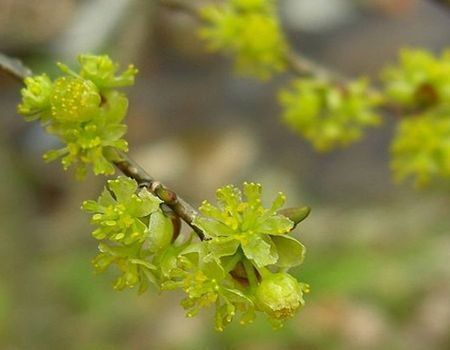Spicebush

Scientific Name: Lindera benzoin
Common Name: Spicebush, common spicebush, northern spicebush, wild allspice, allspice tree, or Benjamin bush
Plant Family: Lauraceae (Laurel family)
Parts Used: berries, leaves, twigs
Season: year-round
Indigenous Uses
As a food, spicebush was used for beverages and the fruit was eaten. It was used to flavor foods such as possum or groundhog. Medicinally, any part is diaphoretic. It was used to treat colds, coughs, phthisis, croup, female obstructions, and white swellings. The bark steeped with dogwood, wild cherry, and corn whiskey would treat measles; the boiled bark with witch hazel and Virginia pine needles was used as for a diaphoretic. The tea was consumed as a spring tonic.
Edible Parts
Harvest spicebush twigs year-round for an aromatic tea; steep 2 tablespoons for 10-15 minutes. Store dried twigs in a dry place with good air circulation for up to two weeks. Avoid boiling the twigs to prevent a bitter taste. Use the fresh leaves in a cold water infusion or sun tea by crushing and soaking for 2–6 hours. Strain the leaves and sweeten with honey, if desired. Grind spicebush berries from female plants in autumn and use to flavor sweet and savory dishes. They work well in marinades, rubs, and dipping sauces. Freeze berries by storing them whole and grinding them as needed.

This project was made possible by a grant from Maryland Humanities, with funding received from the Maryland Historical Trust in the Maryland Department of Planning. Maryland Humanities’ Grants Program is also supported by the National Endowment for the Humanities and private funders. Any views, findings, conclusions, or recommendations expressed on this website do not necessarily represent those of Maryland Humanities, Maryland Historical Trust, Maryland Department of Planning, or National Endowment for the Humanities.
Header image by Kathy Thornton

